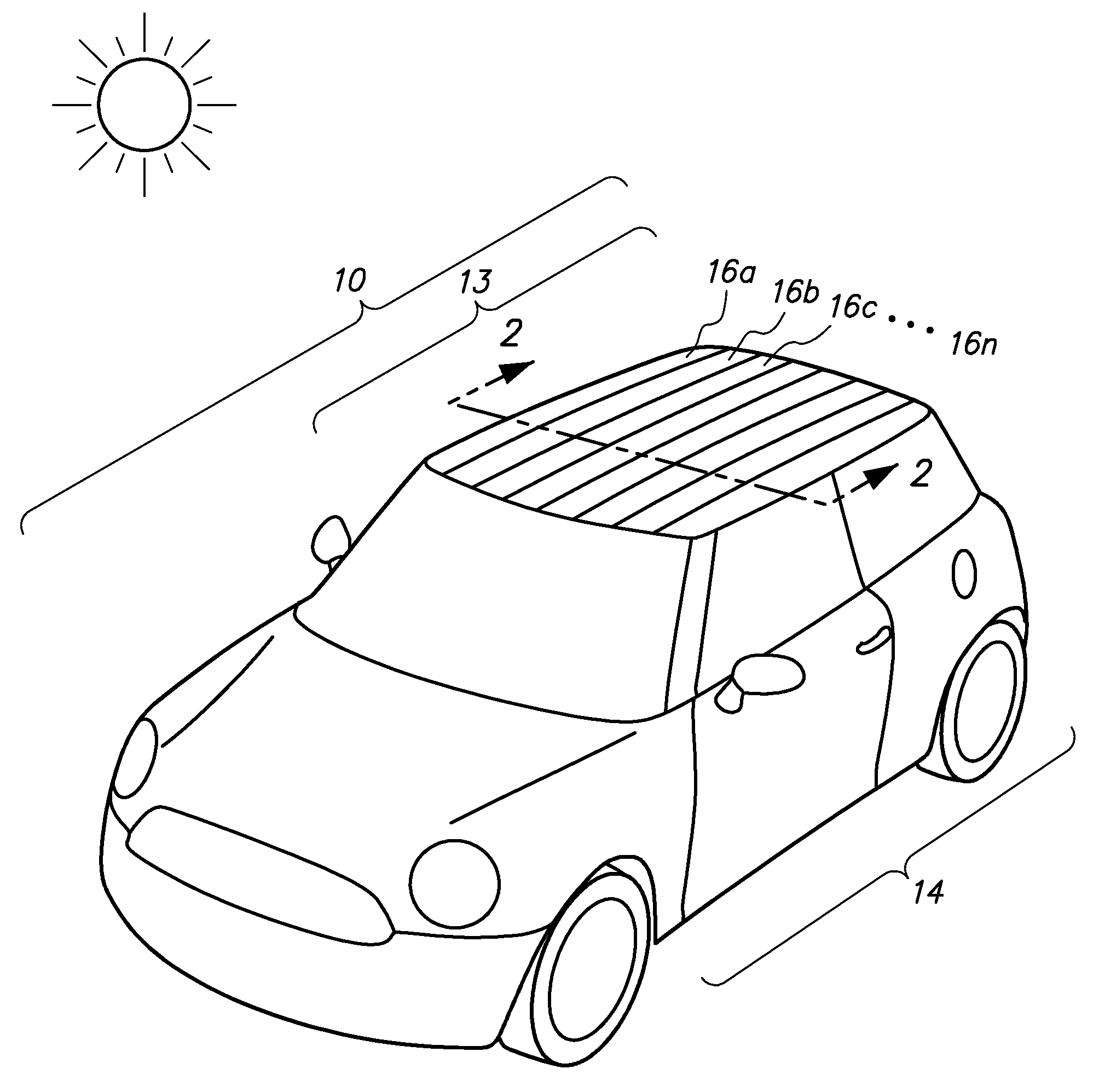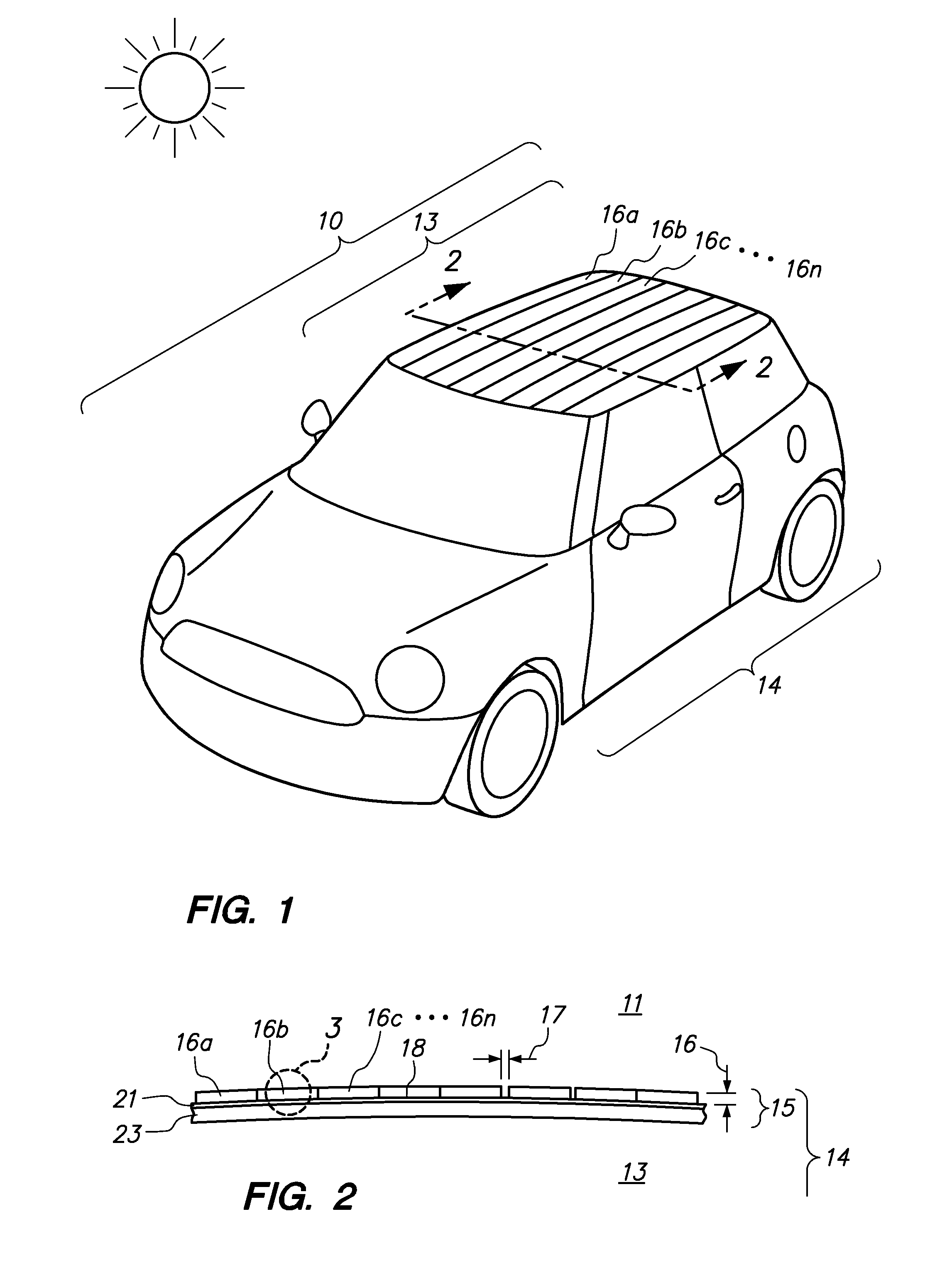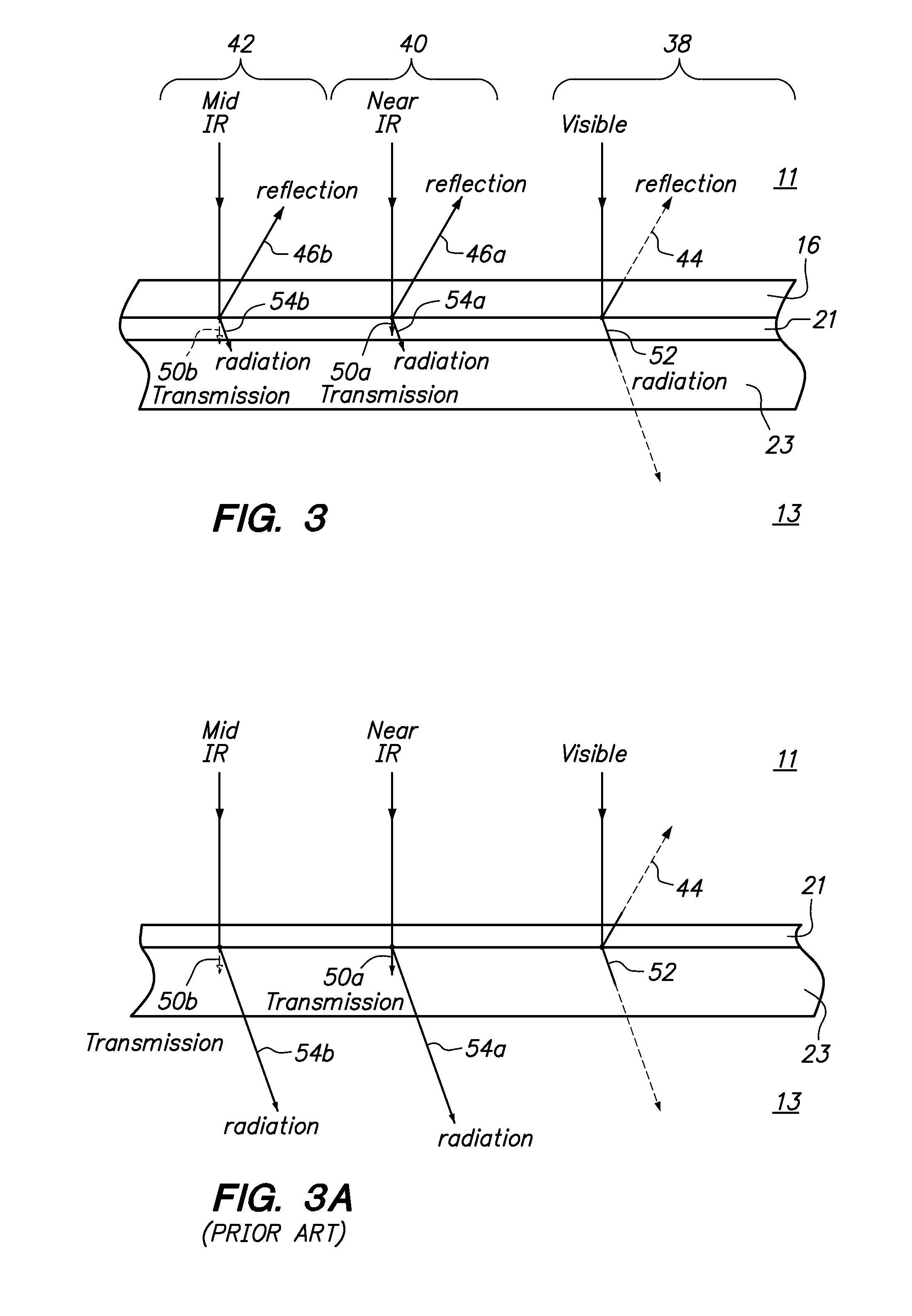Automobiles having a radiant barrier
a technology of radiant barrier and automobile, which is applied in the field of automobiles, can solve the problems that one side of the film does not allow oxygen diffusion into the film, and achieve the effects of reducing the solar load of the automobile, high efficiency, and high light transmission
- Summary
- Abstract
- Description
- Claims
- Application Information
AI Technical Summary
Benefits of technology
Problems solved by technology
Method used
Image
Examples
Embodiment Construction
[0033]Referring now to FIG. 1, an automobile 10 having a roof 15 is shown. The roof 15 protects the occupants from environmental elements (e.g., wind, rain, sun, etc.). As shown in FIG. 2, the roof 15 may have a film 16 (or a plurality of film pieces) attached to an exterior side 18 of a painted layer 21 of the roof 13. The film 16 may be generally optically transparent in the visible wavelengths and generally reflect radiation in the non-visible or infrared wavelengths. The sun's rays transmit solar radiation both in the visible light range and also in the infrared range. A majority of the radiation in the infrared range may be reflected back to the exterior 11 of the cabin 14 by the film 16. A small portion of the energy may be absorbed by the paint layer 21 and the underlying panel 23 of the roof 13, converted into heat and re-radiated into the interior 13 of the cabin 14. Beneficially, the film 16 reduces the amount of solar radiation in the near and mid infrared ranges from bei...
PUM
| Property | Measurement | Unit |
|---|---|---|
| solar reflectivity | aaaaa | aaaaa |
| thick | aaaaa | aaaaa |
| solar radiation | aaaaa | aaaaa |
Abstract
Description
Claims
Application Information
 Login to View More
Login to View More - R&D
- Intellectual Property
- Life Sciences
- Materials
- Tech Scout
- Unparalleled Data Quality
- Higher Quality Content
- 60% Fewer Hallucinations
Browse by: Latest US Patents, China's latest patents, Technical Efficacy Thesaurus, Application Domain, Technology Topic, Popular Technical Reports.
© 2025 PatSnap. All rights reserved.Legal|Privacy policy|Modern Slavery Act Transparency Statement|Sitemap|About US| Contact US: help@patsnap.com



